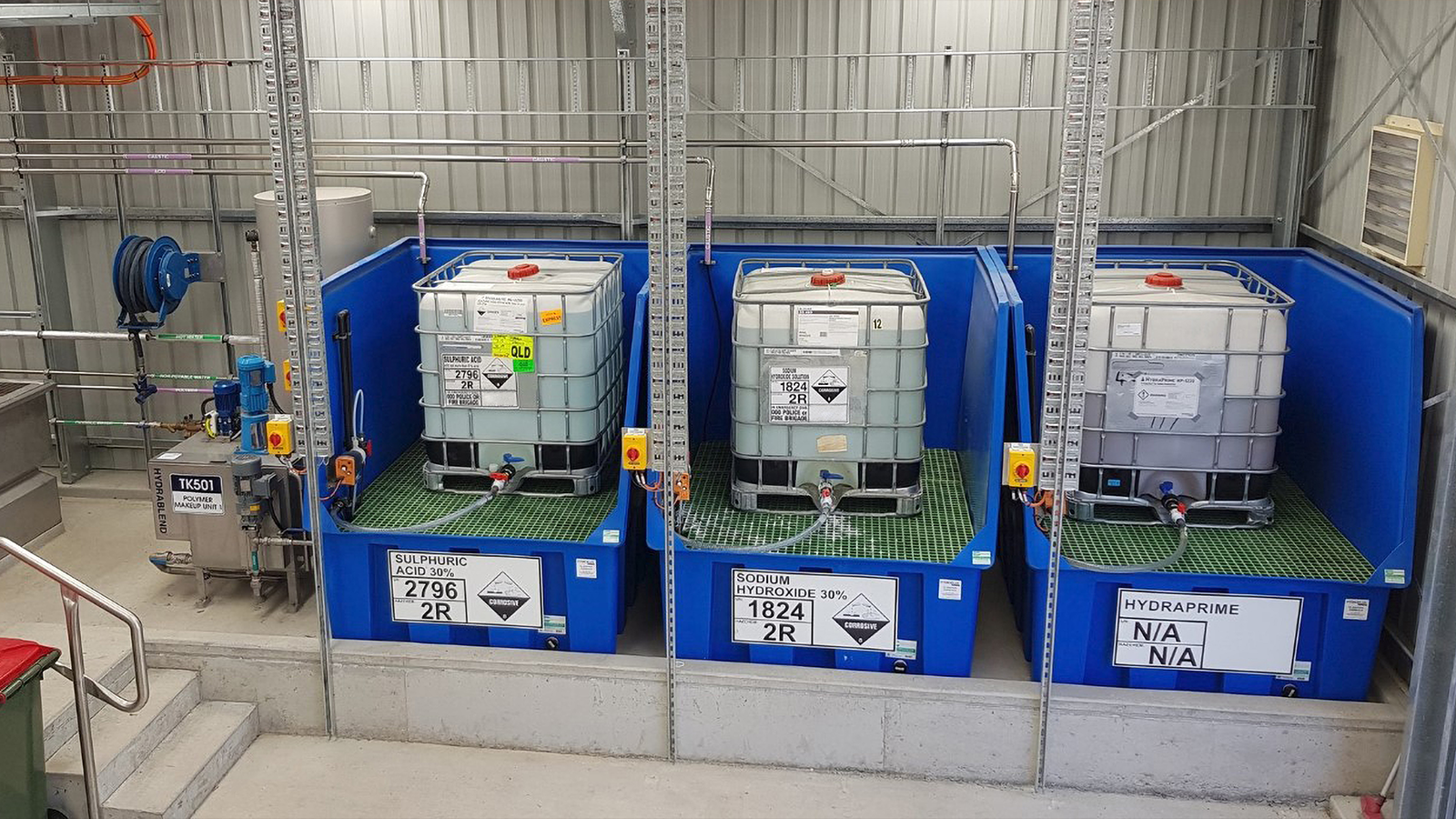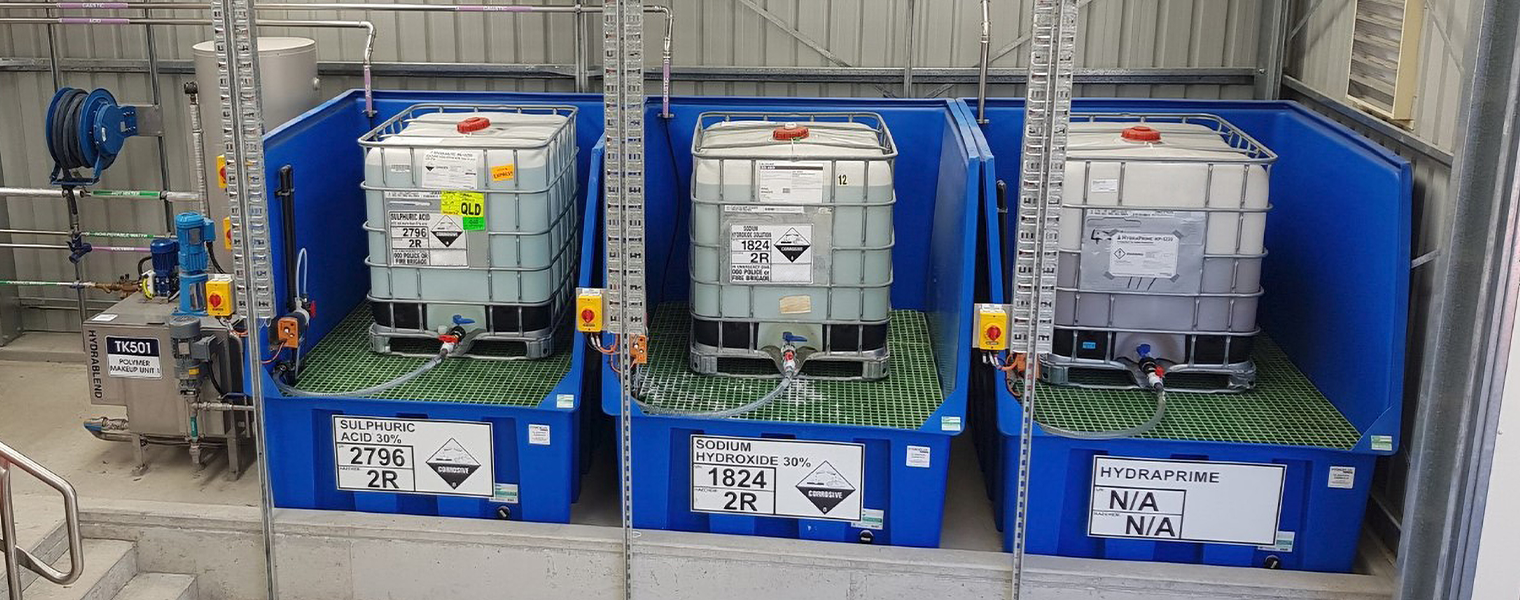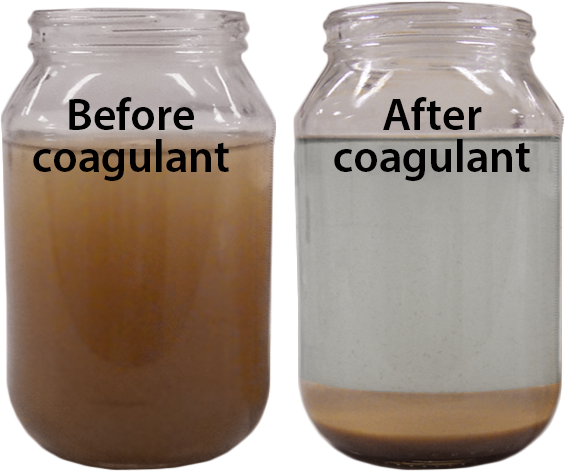
Using Chemistry to Reduce Operating Costs – Part 2
January 28, 2020
Differentiating flocculants into coagulants and polymers.
Knowing a little bit about Step 1, the flocculant chemistry and how flocculants work can be invaluable. Flocculants are characterised in a number of different ways including via their molecular size (point charge, small chain, or extremely large chain of repeating units), via their specific chemical make-up (organic or inorganic), via the apparent charge on the flocculant molecule (cationic, non-ionic, anionic), or via the process with which flocculation takes place (charge destabilisation, chemical bridging due to adsorption, sweep flocculation).

 If we look at molecular size as a starting point, flocculant molecules can range in size from the very small and individual almost point-like charges with a molecular weight as low as 24 atomic mass units (AMU’s), right up to very large chains of repeating molecular units (polymers) of molecular weights up to 30,000,000 AMU’s. If we could stretch these two molecular structures out, the low AMU molecule would be about 0.0001 microns in length, compared to about 80 microns in length for the very high AMU molecule. Thus, the largest flocculant molecule is about 1,000,000 times longer than the smallest one.
If we look at molecular size as a starting point, flocculant molecules can range in size from the very small and individual almost point-like charges with a molecular weight as low as 24 atomic mass units (AMU’s), right up to very large chains of repeating molecular units (polymers) of molecular weights up to 30,000,000 AMU’s. If we could stretch these two molecular structures out, the low AMU molecule would be about 0.0001 microns in length, compared to about 80 microns in length for the very high AMU molecule. Thus, the largest flocculant molecule is about 1,000,000 times longer than the smallest one.
Since all sized flocculant molecules can produce a floc, we reference the words coagulant and polymer to distinguish between them based on their size (or length). Coagulants are flocculant molecules with an AMU of less than about 500,000. Polymers are the very high molecular weight flocculant molecules of AMU greater than 500,000.
Even though a lot of molecules we just called coagulants are made up of repeating units and strictly speaking are polymers as well, we distinguish them as coagulants to help us understand how the small and large molecular structures work. For instance, coagulant molecules are always considered positive in charge, whilst the polymers can be positive (cationic), neutral (non-ionic) or negative (anionic) in charge.

Inorganic coagulants work via charge destabilisation and/or sweep flocculation, whereas organic coagulants work via charge destabilisation and/or chemical bridging. Polymers on the other hand mainly work via chemical bridging. Knowing how these different types of flocculants work and thus how they will affect a system helps experts in the field like Hydroflux hone in on the most suitable chemistry for your process.
Some Selection Examples
For heavy solids laden waters, sedimentation is the most common separation mechanism. In this case chemical bridging gives the best results by producing the largest particles and fastest settling rates. Compared to coagulants, polymers are the best at bridging, and they tend to work better as their chain length gets longer and longer, that is, as their molecular weight goes up. While both cationic and anionic polymers are good at bridging, anionic polymers generally have much longer chain lengths (higher molecular weights) so tend to work better, and the dose required is often lower. In many mining slurries, anionic polymers are the polymer of choice.
For lighter solids laden waters, and for polishing turbid waters, a combination of coagulant followed by a polymer is often used. In these cases, it is difficult to predict which flocculation process will give the best result; sometimes charge destabilisation works best, and other times sweep flocculation is the only process that works. The choice of polymer also becomes more difficult as the number of dose combinations of coagulant plus polymer starts to multiply. This is where a partner such as Hydroflux can help. Their field technicians have extensive experience across the resources industry, and they can visit site and perform jar testing to help determine the most suitable combination for your process.
Suitable flocculation chemistry can also improve filtration processes. Often just a small dose of coagulant helps to produce a shear resistant uniform porous floc structure on the filter surface. Compared to a dense, compact structure, the porous structure created by a coagulant allows water to pass through without letting the solid particles through. This in turn increases filter throughput and gives longer filter runs. Due to their very long chain lengths, polymers are rarely if ever used on filtration processes as these tend to blind the filter and reduce throughput.
Up Next
Categories
- Tradeshows
- Climate
- Community Engagement
- Corporate Announcements
- Group News
- Newsletters
- Product News
- Project Announcement


